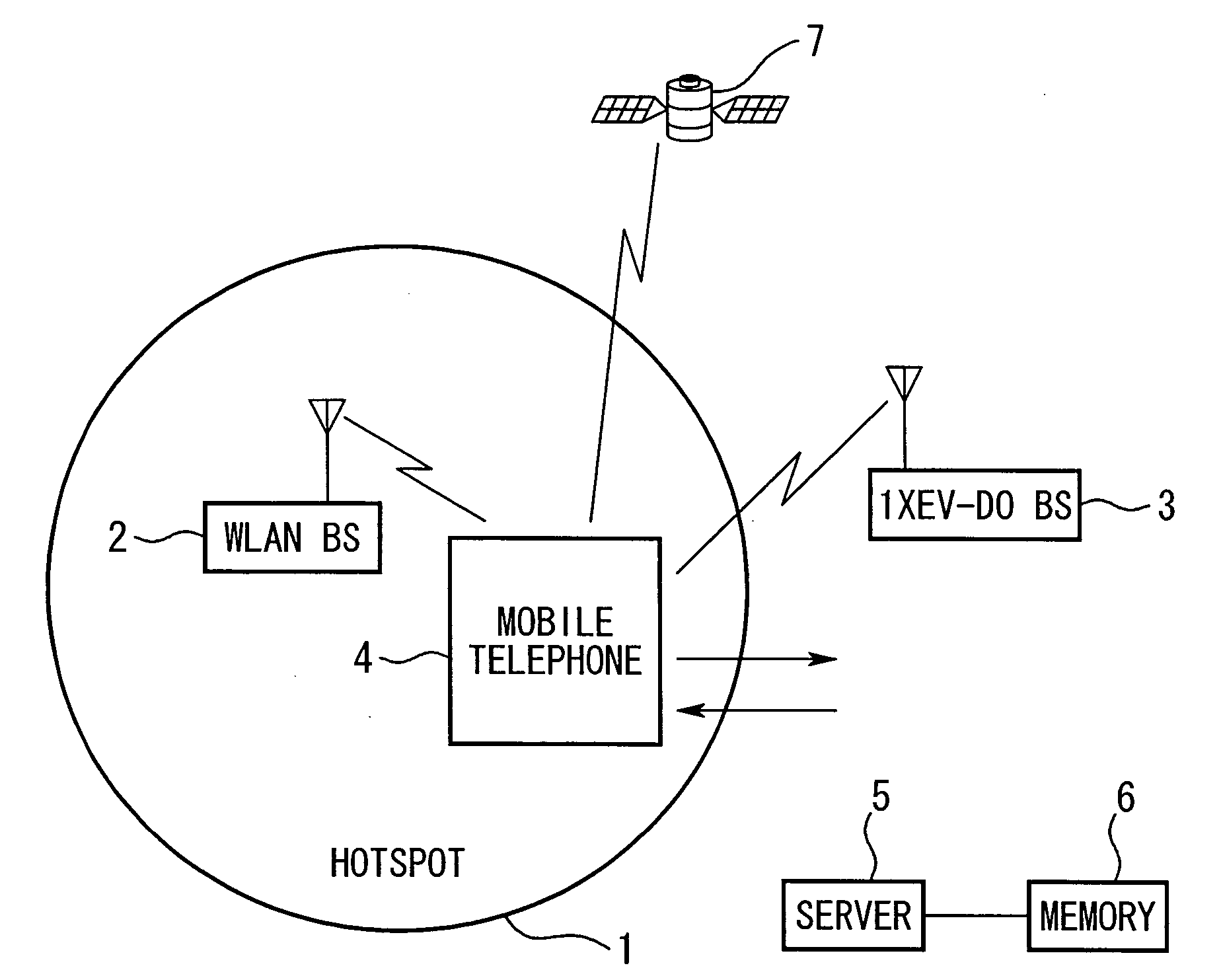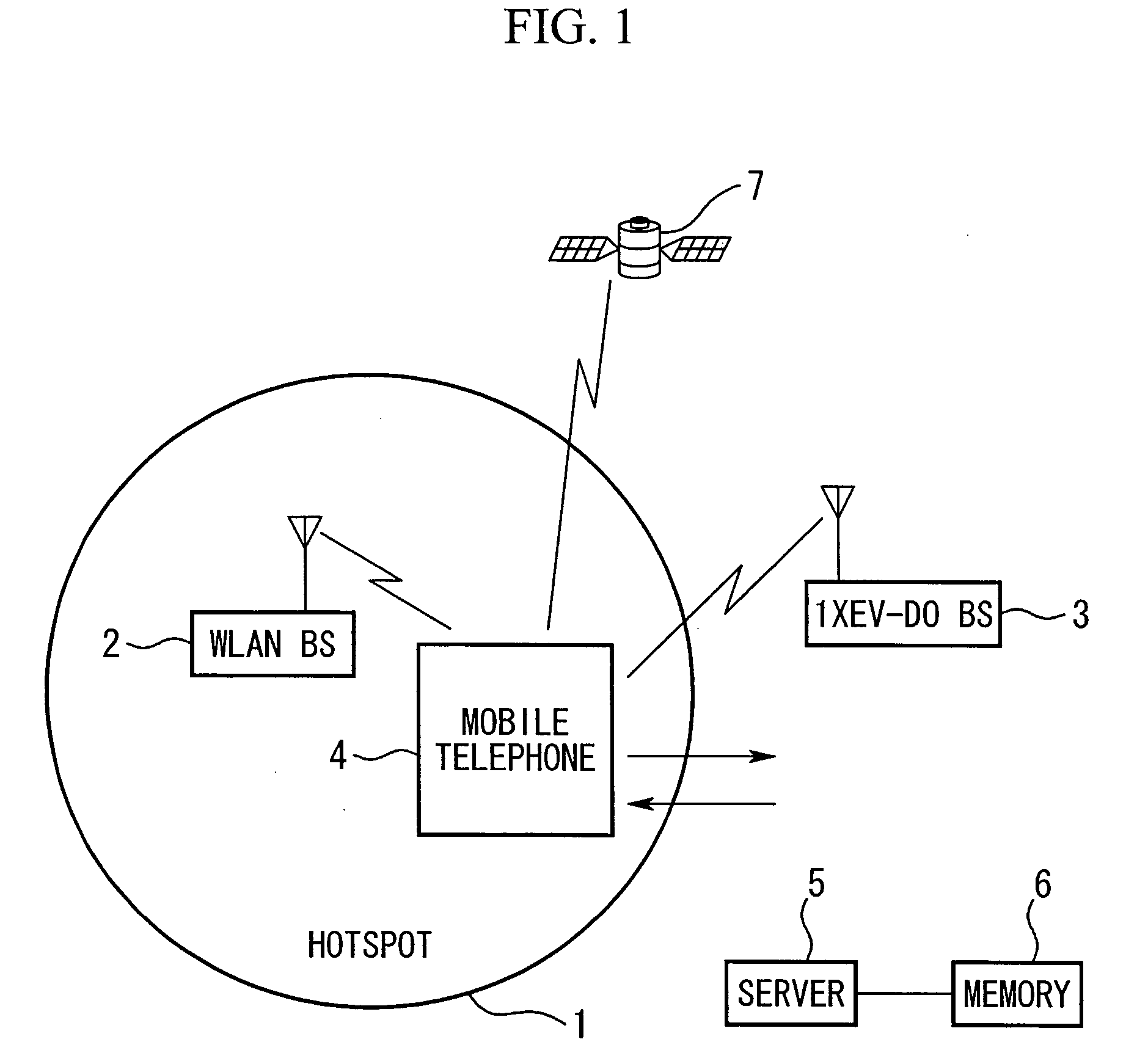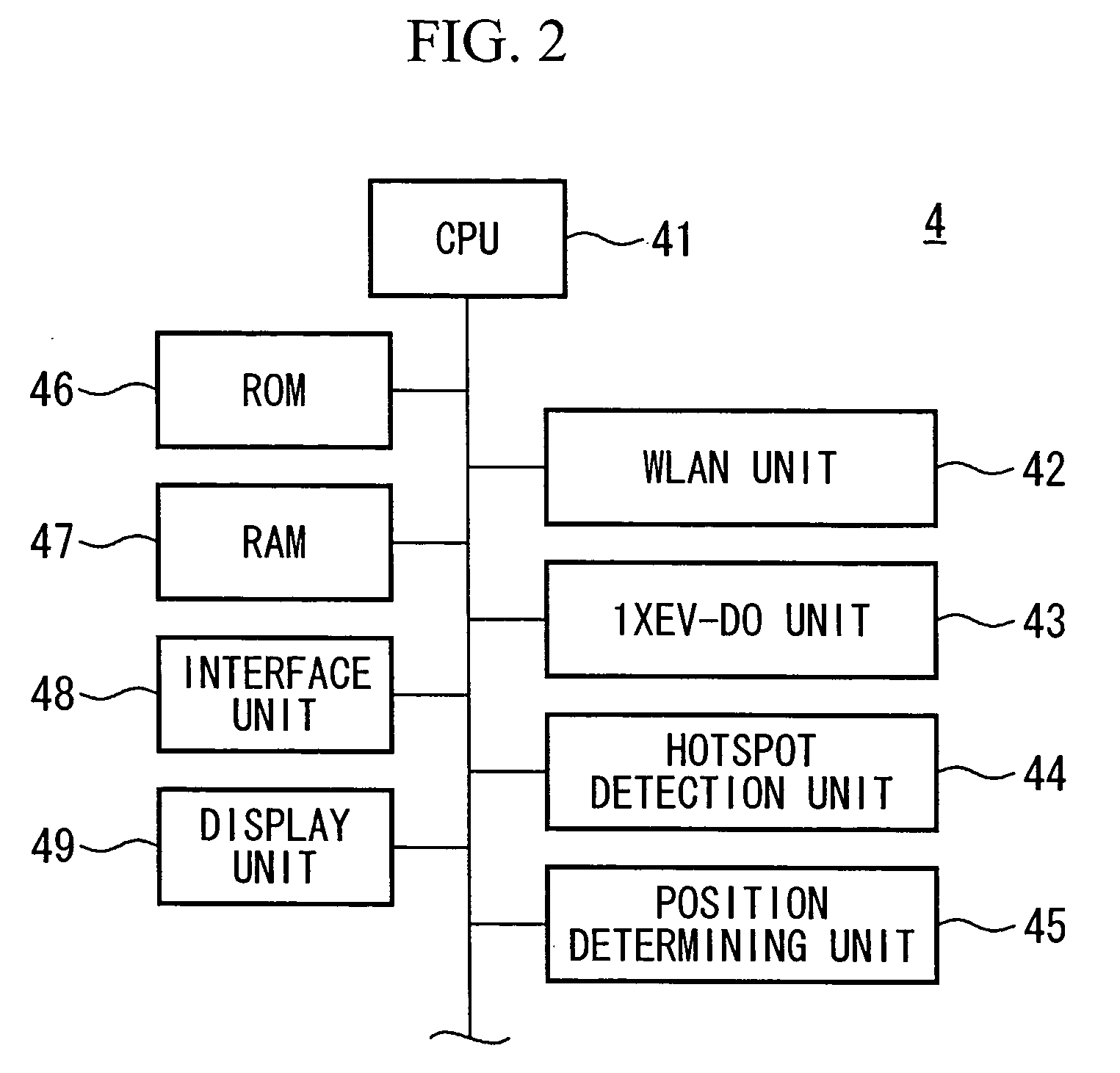Mobile communication terminal and wireless communication system
- Summary
- Abstract
- Description
- Claims
- Application Information
AI Technical Summary
Benefits of technology
Problems solved by technology
Method used
Image
Examples
Example
[0035]FIG. 1 illustrates a wireless communication system according to one embodiment of the present invention.
[0036] In a wireless communication system of this embodiment, a mobile telephone is used as dual-mode mobile communication terminal which has two modes of communication: a wireless LAN mode (a first communication mode) for communicating via a first communication system which covers a local area, and another communication mode for communicating via a different communication system, e.g., the CDMA2000 1xEV-DO network (a second communication mode using a second communication system which covers a wide area), and automatically switches between the two modes. For simplicity, the first communication system will be simply refereed to as the “wireless LAN”, and the second communication system will be refereed to as the “CDMA2000 1xEV-DO network” in the following descriptions. Similarly, the first communication mode using the wireless LAN will be simply referred to as the “wireless ...
PUM
 Login to View More
Login to View More Abstract
Description
Claims
Application Information
 Login to View More
Login to View More - R&D
- Intellectual Property
- Life Sciences
- Materials
- Tech Scout
- Unparalleled Data Quality
- Higher Quality Content
- 60% Fewer Hallucinations
Browse by: Latest US Patents, China's latest patents, Technical Efficacy Thesaurus, Application Domain, Technology Topic, Popular Technical Reports.
© 2025 PatSnap. All rights reserved.Legal|Privacy policy|Modern Slavery Act Transparency Statement|Sitemap|About US| Contact US: help@patsnap.com



